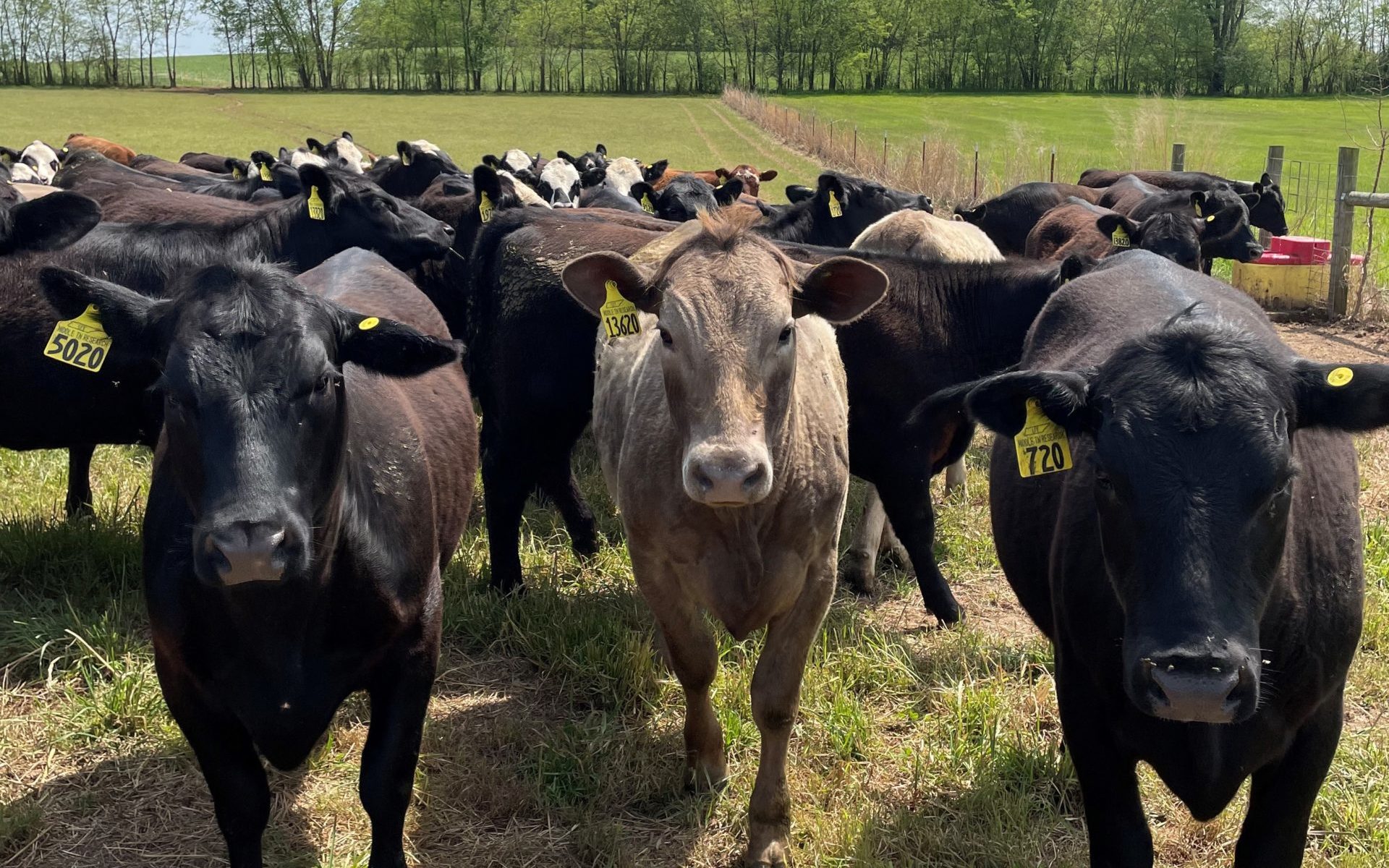

Dr. Andrew Griffith
Assistant Professor
Department of Agricultural and Resource Economics
P: 865-974-7480
The beginning of May still has a few hints of spring in the South especially when moisture is adequate, but there are also hints of summer as it relates to temperatures. There is no way to know what May will bring in terms of moisture and temperature this year, but one guarantee is that cattle producers will be making several decisions and management moves that have financial implications on their operations.
May is a busy month with many producers in the middle of breeding season and even more producers gearing up for the start of hay harvest. These two management and production aspects of the cattle business can have tremendous implications on profitability. The key aspect of these two management decisions is that they are not one dimensional. For instance, the decision to castrate male calves and provide a growth implant is as close to one dimensional as it gets in the cattle business. However, some decisions have implications on cost and revenue.
The first major decision with a breeding season is when it should occur. This can depend on nature or when a producer prefers calves to be born and when a producer wants to market calves. However, making a change to the calving season may not always be feasible. Beyond the actual breeding season, producers must select a sire that will produce calves with desirable characteristics for the market. Most cow-calf producers will be selling into the commercial feeder calf market, which means most buyers are looking for medium and large frame number one muscled calves that will grow quickly and efficiently. Furthermore, those same buyers will be looking to purchase cattle that will grade Choice or Prime from a quality standpoint and a 1, 2, or 3 from a yield grade standpoint.
The cow-calf producer needs calves that will meet the previously stated preferences, but also needs calves that will grow efficiently while the calves are nursing and in a backgrounding situation. Furthermore, the cow-calf producer needs a sire that produces females that can enter the cow herd and be efficient from a maintenance standpoint and a reproductive standpoint. There are some well balanced sires that can put a cow-calf producer on the right path to achieving all of these goals, but this takes attention to detail. Some producers can achieve this goal while other producers may be best suited for providing cattle for the terminal market while others are best suited for the maternal market.
It is clear how breeding season decisions can lead to implications on cost and revenue. Revenue is the clearest in that producing calves that the market desires will increase revenue. Less clear is the cost of maintaining a cow for a year. Lower energy requirement cows and efficient growing calves can same money on input costs. If some of this information is not understood then it may be prudent to spend additional time studying EPDs. In other words, sometimes it is worth paying a little more for a bull to achieve the desired results.
In May, many producers become more concerned about hay than anything else on the cattle operation. This is understood, considering many producers in the South feed hay from late fall through early spring (120-150 days). There is a considerable quantity of research that supports grazing as a lower cost alternative to feeding cattle than feeding hay. This is not difficult to understand in that hay requires equipment, fuel, and labor or purchasing hay while grazing requires fencing and a water source. In essence the cows do the majority of the work to feed themselves as opposed to the cattle producer harvesting hay and then taking the hay back to the cattle. However, there are times when the investment in hay may be less than the additional revenue garnered by being able to run more cattle or grow calves until a specific marketing time period. This statement does not provide a free pass to producers who are overstocked, because being overstocked probably has a negative impact on profitability.
There is no earth-shattering information in this article, but it is meant to remind producers to take some time to evaluate decisions. May is a busy month from many aspects, but doing a little planning and putting pencil to paper may result in greater returns.